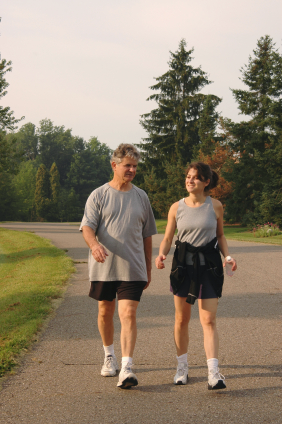 Preventing Arthritis
Preventing Arthritis
Arthritis is a serious health condition, but can be treated or possibly prevented. Many of the habits that are recommended for a healthy lifestyle play a role in preventing some types of arthritis and related conditions. Some common tips for prevention include:
- Eat a healthy, well-balanced diet to help maintain your recommended weight. Women who are overweight have a higher risk of developing osteoarthritis in the knees.
- Talk to your doctor about taking vitamin and mineral supplements. Having insufficient levels of vitamin D decreases the amount of calcium your body can absorb. That coupled with lower calcium levels as you age can help contribute to osteoporosis.
- Exercise regularly to strengthen muscles around joints and help increase bone density. Exercise may reduce wear and tear on your joints, which can help prevent injury and reduce the risk of osteoarthritis. Increased bone density also can help stave off osteoporosis.
- Avoid smoking and limit your alcohol consumption to help avoid osteoporosis. Both habits weaken the structure of bone, which puts you at higher risk for fractures.
- Discuss hormone replacement therapy (HRT) with your primary care provider if you are postmenopausal. Many women lose bone mass during the pre- and postmenopausal years when their ovaries stop producing estrogen. One of estrogen’s functions is to help keep calcium in the bones and maintain bone mass. Lowered estrogen level is a major cause of osteoporosis in women after menopause.
 Treating Arthritis
Treating Arthritis
Health-care providers need a better understanding of arthritis in order to help women access diagnoses and appropriate treatments sooner. If you think you have arthritis or if you have been diagnosed with it, you can take steps to manage it. There is no cure for arthritis, but there are many ways you can take control of your health in order to feel better and improve our quality of life. the treatment plan you design with your health-care team may include recommendations such as these.
- Exercise to lessen pain, increase movement and reduce fatigue.
- Alternate periods of rest with activity. Pace yourself to help protect your joints from the stress of repeated tasks and to help reduce fatigue.
- Use hot or cold compresses on joints for short-term pain relief and to help prepare for exercise.
- Work with your primary care provider to determine the best over-the-counter or prescription medications that may help slow the progression of arthritis and ease pain.
- Always work closely with your health-care team to find the best medication, diet and exercise program for you.
- Visit your health professional each year for a comprehensive physical exam.
Source: www.arthritis.org








